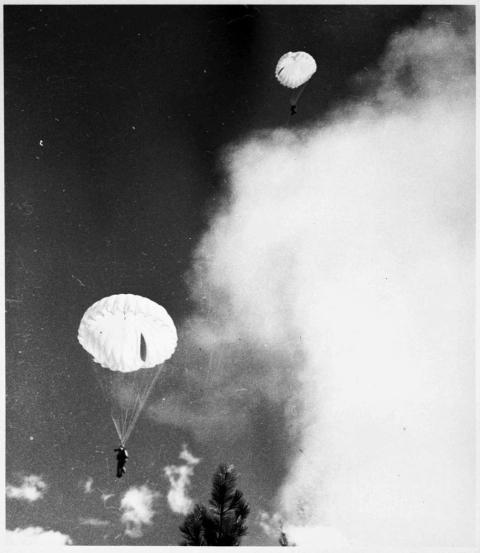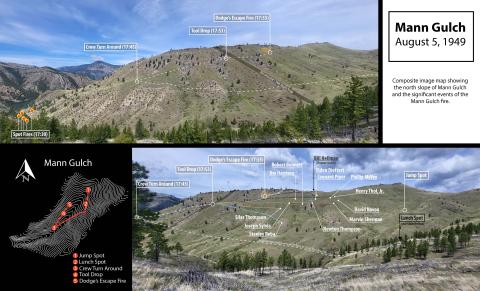On August 5, 1949, the Mann Gulch Fire broke out on the Helena National Forest and ultimately took the lives of 13 firefighters. This incident underscored the need for scientific study of fire behavior and directly led to the development of the Missoula Fire Sciences Laboratory, the 10 Standard Firefighting Orders and the National Technology and Development Program.
The story of the Mann Gulch tragedy has a lasting legacy within the wildland firefighting community and is often retold and reexperienced through site visits and staff rides. The story was famously captured for public consumption in Norman Maclean’s book, “Young Men and Fire”, where readers can learn about the events and individuals involved that were forever codified on that fateful day.
July 30, 2024 Interview featuring Dan Jimenez: Unique Missoula Fire Lab born from the Mann Gulch tragedy.
Video Series:
Learn about the events at Mann Gulch through a series of videos.
This video series was developed as a learning tool to build on the history of the Mann Gulch Fire and provide a format for individuals to revisit the lessons learned from this tragic event. A series of four presentations as well as seven stand videos provide the history and site interpretation of the men and events of the Mann Gulch Fire as we understand them today.
Bonus Material:
Please view the Documents and Downloads section (left navigation section) for 360 photos of the Mann Gulch.
National Wildfire Coordinating Group (NWCG) Library
Staff Ride to the Mann Gulch Fire | NWCG
This Day in Wildland Fire History: Mann Gulch (Montana) - August 5, 1949
Collection of Historical Photographs, Mann Gulch Fire | NWCG

